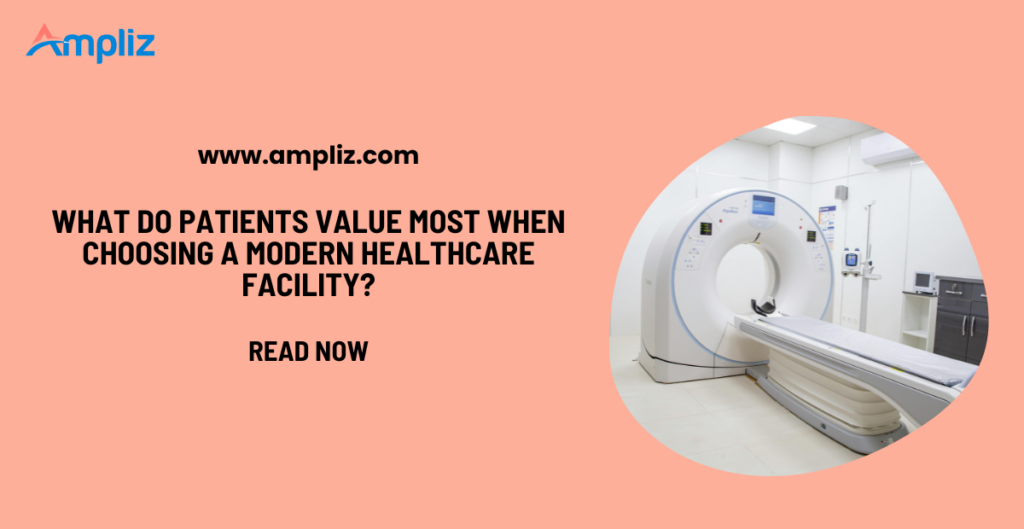Choosing a healthcare facility is a task that today’s patients take very seriously. While proximity to a doctor or clinic may have determined one’s choice years ago, that’s not the case anymore. Many patients are willing to travel to find a clinic that supports their wellness and immediate medical needs. And today’s patients are informed about everything from safety to amenities, meaning they’ll expect a modern facility that melds high-quality medicine with sustainability and comfort.
What matters most to patients? This guide explores some of the most critical qualities that patients expect in the 21st century.
An Embrace of Holistic Care
Traditional views of health could be very compartmentalized, separating physical and emotional health into different categories that did not intertwine. Today’s patients, however, see their health quite differently. Environmental surroundings, spiritual practices, and emotional well-being are all bound together with physical health. Consequently, the ideal healthcare facility will pull together different therapies that address all facets of one’s health rather than just a few symptoms.
Meditation, mindfulness, and counseling can accompany more traditional physical exams or medications, for example. Patients won’t just visit a physician. Instead, they’ll meet with specialists in a variety of interconnected fields to arrive at a treatment for the mind and body. They may have a psychiatrist and nutritionist on a care team in addition to a doctor and nurse.
Personalized Care Plans
Healthcare facilities need to prioritize personalized care plans to meet the growing needs of modern patients. That effort starts with a welcoming, friendly, and communicative staff that greets patients by name. Caregivers and providers should demonstrate empathy throughout a patient’s visit and be willing to integrate their specific concerns into a treatment plan.
Staff members need ongoing training to ensure they’re communicating well and demonstrating emotional intelligence when handling challenging situations. And staff members must be good listeners. Patients need to feel confident that their issues are being taken into account. In response, providers should tailor care plans to a patient’s goals and desires. Making the effort to put patients first can yield better reviews and long-term loyalty for healthcare facilities.
A Focus on Safety
Healthcare facilities had to step up their safety protocols during the pandemic. And even though social distancing may now feel like a concept from the past, the idea of prioritizing safety has not disappeared. In fact, patients want to see a continued focus on maintaining sanitized facilities that can help limit the spread of germs. Patients will be wary of seeking medical help in a clinic that doesn’t show evidence of cleanliness.
Clinics that abide by CDC guidelines and stay on top of sanitation protocols will be more likely to earn a patient’s trust. Fortunately, measures like remote check-ins and HEPA filters are easy ways for facilities to be proactive about health and safety. Further, UV disinfection can kill bacteria and viruses, offering another measure to ensure patient and staff safety.
Facilities shouldn’t be shy about the work they’re doing, either. Sharing safety protocols on the clinic website, for instance, can be an excellent way to be transparent and keep patients informed. Likewise, websites or social media platforms are great places to post protocol updates so patients can feel more at ease about an upcoming visit.
Non-Invasive Rehabilitation Services
Patients want rehabilitation methods that are non-invasive, sustainable, and innovative. Examples include using a balance ball that’s anti-microbial or exercise bands crafted from biodegradable materials. Non-toxic, durable equipment will stand the test of time, too, ensuring that facilities aren’t constantly replacing equipment. Patients will appreciate using equipment that doesn’t subject them to harsh chemicals, and they’ll feel good about supporting facilities that embrace greener processes.
Further, facilities that offer cryotherapy and infrared therapy will appeal to patients seeking unique rehabilitation opportunities. Cryotherapy uses cold temperatures to limit inflammation or pain. By contrast, infrared therapy uses heat generated by infrared light waves to promote better circulation, which, in turn, promotes pain relief and relaxation.
In particular, infrared sauna health benefits have been particularly notable. These saunas help with chronic pain while aiding in tissue repair. And, given that the saunas are hot, the act of sweating helps regulate body temperature and remove waste products. Patients seeking innovative health solutions will be more inclined to choose facilities that provide access to new technologies with proven track records of success.
Better Healing Environments
Traditional healthcare environments aren’t known for their deluxe patient rooms. Cold, clinical spaces and noisy hospital hallways make it hard to experience healing as a patient. As a result, the healing process can take longer, and patients are understandably eager to find facilities with better amenities. What may have seemed like a luxury even a decade ago is now an expectation for patients today.
Healthcare facilities that are outfitted with hotel-like rooms are far more conducive to healing. Some of the best rooms are even soundproofed, and all rooms will take advantage of natural light to help facilitate healing. Plus, with adjustable light fixtures and thermostat access, patients can establish the ideal in-room environment. Nearby gardens, mini art galleries, and other aesthetic touches give patients additional places to find solitude and appreciate what’s around them.
Technological Advances
Patients want their medical experiences to be as seamless as possible. To do this, the best healthcare facilities tap into technology to expedite scheduling and offer more transparent communication. For instance, today’s patient portals offer quick access to medical records and doctor communications. They also let patients renew prescriptions or check test results, all from a smartphone.
In addition, telehealth appointments give patients the chance to get advice or pursue follow-up care without driving to a physical office. These virtual consultations save time while helping patients and providers stay connected throughout a treatment plan.
Top-notch facilities also go above and beyond to provide inclusive spaces. Multilingual staff can ensure that patients’ needs are heard. And ADA-compliant buildings serve all individuals with features like wider entrances, grab bars, ramps, and signage for those with visual impairments.
Sustainable Design
Particularly among younger generations of patients, sustainability is more than a buzzword. It’s a lifestyle movement that advocates for making eco-friendly design decisions. Buildings with a sustainable approach to design and materials choices will attract environmentally-conscious patients.
LEED-certified buildings and non-toxic or recycled building materials are among the moves healthcare facilities can make to garner stronger interest. Interior design choices may include bamboo flooring or low-VOC paints, which emit fewer harmful chemicals into the air. Moreover, facilities can tout these decisions on promotional materials or websites to alert conscientious patients to them. Making an effort to reduce a facility’s carbon footprint and contribute to a healthier world can go a long way toward earning patient trust and loyalty.
Meeting Patient Expectations
Modern healthcare facilities must adapt to meet patient preferences in the 21st century. Assembling care teams that include individuals with wide-ranging expertise creates a more holistic approach to healthcare that will resonate with today’s patients. Being attentive to design choices when creating or remodeling facilities can result in nicer amenities and demonstrate a commitment to eco-conscious decisions.
And facilities must turn to technological advances to enhance patient care while maintaining a personalized, supportive environment. When facilities can meet these needs, they’ll attract more patients, nurture a stronger reputation, and improve their quality of care.



